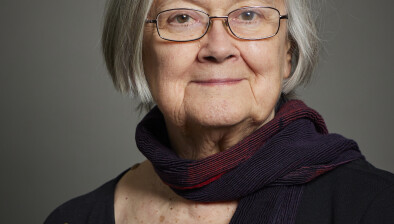Our Legal Heritage: Remembering prisoners of war

John Ronald Cameron
When we think of prisoner of wars (POWs), we probably think of British prisoners with the images that recall the impenetrable fortress of Colditz and statements that “for you the war is over” in the Great Escape. Both dramatise events with their focus on British escape stories where the reality of prisoner of war camps tended to be more one of boredom, hunger and inactivity, at least for the officers, in contrast to the lower ranks who were required to work.
Unlike the Japanese, who signed but did not ratify the Geneva Convention and who subjected Allied prisoners to extreme brutality and starvation, the Germans mostly respected the protection of both officers and other ranks as they were reciprocal signatories to the Third Geneva Convention relative to the Treatment of Prisoners of War (1929). That made various requirements regarding POWs. These included that they were treated humanely and protected from violence, intimidation, insults and public curiosity. They were to be adequately housed and to receive food and clothing. Medical attention was also to be made available.
Conditions in the camps were to be inspected regularly by the International Committee of the Red Cross to ensure compliance with the Convention.
During World War 2, more than 170,000 Allied POWs were captured in Europe and held in a range of POW camps, stretching across Poland to Italy, including in Germany itself. Leaving aside the obvious risks from escaping, and certainly after 1944 of being shot for doing so, POWs also died in less dramatic circumstances from illness and disease. Their deaths, just as those of combatants, are commemorated on relevant Commonwealth War Graves (CWG) memorials.
One Scottish solicitor, Lieutenant James Ronald Cameron WS, provided the initial focus for this article as he died in captivity as a POW. His background is outlined below as we can pause to reflect on the life of a fellow lawyer who died during that conflict.
However, when remembering the war dead in this week of remembrance it is important, as the CWG Commission does, to acknowledge those who died from the opposing sides.
Great Britain imprisoned German and other POWs throughout the Second World War who were then accommodated in camps across the country and abroad in Canada and the USA too.
In respect of their memorials, the CWG Commission similarly holds responsibility for maintaining their graves. As a contrast, one German POW, Fritz Saalbach has been chosen. Though his former occupation is unknown, prior to his army service, his death was indeed of interest to the Scottish legal profession. His death, as were others were in similar circumstances when held captive in Scotland, was the subject of Scottish legal proceedings, a fatal accident inquiry.
John Ronald Cameron WS
Lieutenant John Ronald Cameron was aged 33 at the time of his death and an officer in the Argyll and Sutherland Highlanders 8th Battalion. He had joined the Territorial Battalion prior to the Second World War where he would have attended evening and weekend training while working as a lawyer during the day. The 8th Battalion mobilised and left Southampton for France on 2nd February 1940. Lieutenant Cameron was temporarily attached to the 1st East Surrey Regiment from the 24th to the 28th of February and rejoined the 8th Battalion on the 3rd of March. The unit travelled through Saighin, Metz, Waldweistoff, Rouen, St Blimont before finally involved in the major fighting around the 5th June.
Cameron’s company held positions near the Chateau at Belloy in the Somme area and East of the village. At 7am the enemy launched several strong attacks on a number of these positions and after suffering heavy casualties the outlying platoons withdrew into the grounds of the chateau. The injured were placed into the house itself. Spirits rose when Lieutenant Cameron searching the storerooms found some preserved eggs and some sugar and was able to issue one egg to each man. As the Battalion’s supply of grenades had been exhausted and ammunition was running out and with the men just becoming targets for enemy fire, the commanding officer made the decision to cease fire. Their German captors expressed surprise at finding out how few men had been opposing them.
Prior to the war Cameron had been a Writer to the Signet (1934), a MA graduate from Edinburgh University and was an old Fettesian. He had been working prior to his join-up on the staff at Messrs Fyfe Ireland & Co, then at Hanover Street, Edinburgh. Born in Cambridge, he was the second son of John Forbes Cameron, a Scottish mathematician and Master of Gonville and Caius College, Cambridge. He married Adeline Mary Simson, the daughter of a deceased lawyer, Robert Simson OBE WS at St Cuthberts Church, Colinton in 1938.
Following his capture, he was imprisoned at Oflag VII C Laufen situated in south-west Germany. However, his death on 23 April 1941 was recorded at Posen (Poznan) which was many miles away in Poland. Why that was the case remained unclear from his records. On researching, a surprising reference came up in Hansard and parliamentary questions. Indeed, it appears in March 1941 that there were concerns being expressed regarding the transfer of over 700 officers from Laufen to Stalag XX1D at Poznan.
A ministerial reply confirmed that “British officer prisoners of war [had] been transferred to camps possessing inferior amenities on the ground that conditions in an officers’ prisoner of war camp in Canada do not conform to the requirements of the [Geneva] Prisoners of War Convention. Inquiries have shown that the allegations regarding the Canadian camp are completely unfounded, and the camp has in fact been favourably reported on by a delegate of the International Red Cross. The Protecting Power has been asked to furnish a report on the conditions in the camps to which the British officers have been moved, and strong representations have been made to the German Government”.
The minister echoes the respect for the requirements of the Geneva Convention where he concludes that were the action to transfer been taken by the German government by way of reprisal, that it was illegal under the Convention.
Details as to how Cameron died became clearer from his Pow records. He died in a Field Hospital from what was described as Darmverschluss Bauchfellentzündung (intestinal obstruction), peritonitis and Kreislaufinsuffizienz (circulatory insufficiency) on 23 April 1941. His death was reported at the end of May 1941 in The Scotsman. He is buried at Poznan Old Garrison War Cemetery which also accommodates those 50 executed escapers from the Great Escape in March 1944 at Stalag Luft III. His family has chosen an epitaph that “Jesus said, he that believeth in me, though he were dead, yet shall he live.”
As is so common with many of the war graves, their deaths are recorded on many memorials remembering their lives. In Cameron’s case his name is recorded from church through school to university.
Fritz Saalbach
Much less is known about Saalbach’s background, but he was imprisoned at Camp 109 Brahan Castle (Estate), Dingwall, Rossshire. He died on 25 (sic 17, which is what the CWG Commission’s records state) June 1946. His death was certified as having occurred between 5-5.40pm in the bathroom as a result of suicide by hanging with reference to his suffering from mental depression.
The FAI was held on 11 July 1946. The emergency powers that were brought into force at the start of World War Two continued to affect court proceedings so that there was no jury as was required under the relevant legislation. That had been dispensed with during the war and these regulations were still in operation in 1946.
The determination was therefore recorded by the sheriff-substitute, Alexander Douglas Donald, Esquire on his own. There were six witnesses recorded as having given evidence with no independent interpretation with the interpretation presumably being provided by the Germans themselves.
The determination records that “the ordinary camp procedure when a member requires medical attention was duly observed and that no blame is attributable to anyone but would recommend in special cases of this kind special attention should be given”. No expert medical evidence was provided with the only medical evidence coming from Dr Peter Thomson who certified the death. It is suggested that this would not now be the totality of evidence expected in a similar inquiry.
Reference is made to the FAI being held under section 3 of the Fatal Accidents Inquiry (Scotland) Act 1895. It does not outline exactly why the FAI was required. The suspicion is that this death was treated as mandatory due to this having been a death in effect during custody rather than discretionary as being a matter of public interest. Turning back to the requirements of the Geneva Convention, such a finding might have been considered as being required to record due scrutiny of German prisoners receiving appropriate medical care under authority care.
The other observation may be to the date as it is subsequent to the end of the Second World War, but many prisoners did not return for some time to Germany and remained under British control.
Saalbach was buried at Dingwall (Mitchell Hill) Cemetery but was transferred later to Cannock Chase Cemetery which is a German Military Cemetery. This transfer was the result of an agreement between the governments of the United Kingdom and the then Federal Republic of Germany. This related to the ongoing care of the graves of German nationals who had died in the United Kingdom during the two world wars. There was agreement that there should be a central cemetery, following which there were transfers made to Cannock Chase where there are 5,000 graves with the inauguration and dedication in that cemetery having taken place in June 1967.
In conclusion, two different deaths have been discussed which are equally tragic for the families to whom they did not return because of war and their incarceration. Though no doubt they led two very different lives, prior to the war, with their motivation and inclusion for being involved in the war being different, both merit remembrance. One as a lawyer and the other as his death was subjected to scrutiny through Scottish legal proceedings.
It is suggested that a fitting epitaph for both might lie the following words: “proudly, you gathered, rank on rank, to war. As who had heard God’s message from afar, all you had hoped for, all you had, you gave…”










